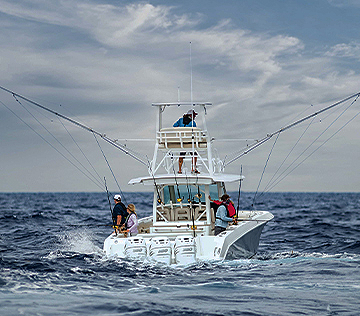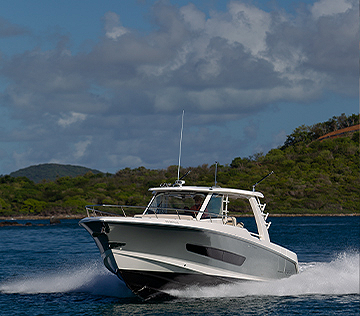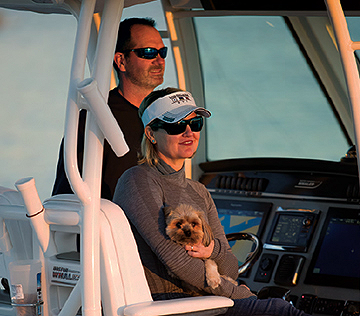
Ultimate Snapper Fishing Guide
Understanding Bay Boats
Welcome to the ultimate guide to snapper fishing. Whether you’re a seasoned angler or a curious beginner, this guide will help you master the art of catching snapper. We'll cover everything from gear and techniques to the best spots and bait.
1. Understanding Snapper
Species Overview: Snapper are highly prized game fish known for their vibrant colors and delicious taste. They come in various species, but the most sought-after for sport fishing include the Red Snapper, Yellowtail Snapper, and Mangrove Snapper.
Habitat: Snapper are typically found in warm, coastal waters, often near reefs, wrecks, and underwater structures. They prefer depths ranging from 20 to 200 feet.
- Behavior: Snapper are opportunistic feeders, known for their sharp senses and strong swimming abilities. They are often found in schools and can be quite aggressive, especially during feeding times.
2. Essential Gear and Tackle
Rod and Reel: Choose a medium to heavy action rod paired with a reel that has a strong drag system. For most snapper species, a spinning reel or a conventional reel will work well.
Line: Use a high-quality monofilament or braided line with a test strength of 20-40 pounds. Braided lines are preferred for their sensitivity and strength.
Hooks: Circle hooks in sizes 2/0 to 5/0 are ideal for snapper fishing. They’re designed to hook the fish in the corner of the mouth, making catch and release easier.
Weights and Sinkers: Depending on the depth and current, you might need various weights and sinkers to keep your bait on the bottom where snapper are feeding.
- Terminal Tackle: Swivels and leader lines (20-30 lb test) are important to prevent line twists and breakage.
3. Bait and Lures
Live Bait: Snapper are highly attracted to live bait such as pinfish, shrimp, and squid. Live bait mimics the natural prey of snapper, making it very effective.
Cut Bait: Fresh cut bait, like pieces of mullet or sardines, can also be highly effective, especially when live bait is unavailable.
- Lures: If you prefer using lures, opt for jigs and soft plastics that resemble baitfish. Vibrant colors and lifelike movements can attract snapper in various conditions.
4. Techniques and Tips
Bottom Fishing: Snapper are usually found near the bottom, so bottom fishing is the most common method. Drop your bait to the desired depth and wait for a bite. Use a slow and steady retrieve to mimic a wounded fish.
Drift Fishing: Drift fishing over known snapper habitats can be effective. Let your bait drift naturally with the current while keeping an eye on your line.
Chumming: Chumming can be a great way to attract snapper to your location. Use chopped bait or fish parts to create a scent trail that draws snapper in.
Finding the Right Spot: Look for underwater structures like reefs, wrecks, and drop-offs where snapper are likely to congregate. Using a fish finder can significantly increase your chances of locating these spots.
- Safety: Always check weather conditions before heading out. Wear a life jacket and have safety equipment on board. Snapper fishing often involves deep water and strong currents, so safety should be your top priority.
5. Geographical Fishing Locations
Atlantic Coast:
Florida Keys, Florida: The Florida Keys are renowned for their excellent snapper fishing. The waters around Key Largo, Islamorada, and Marathon offer abundant snapper populations near reefs and wrecks.
North Carolina: The Outer Banks and areas around Cape Hatteras are known for red snapper fishing. The combination of deep drop-offs and nearshore reefs makes this a prime location for snapper fishing.
South Carolina: Charleston and Hilton Head offer great opportunities for both red and mangrove snapper. The estuarine and nearshore reefs are productive fishing grounds.
Gulf of Mexico:
Texas: The Texas coast, particularly around Corpus Christi and Galveston, provides excellent snapper fishing. The extensive reef systems and artificial structures attract snapper throughout the year.
Louisiana: The coastal waters around Venice, Grand Isle, and the marshes near Lafitte are famous for their snapper fishing. The complex network of reefs and wrecks creates ideal snapper habitats.
Florida Panhandle: Destin and Pensacola offer outstanding snapper fishing opportunities. The combination of deepwater structures and inshore reefs makes this area a hotspot for various snapper species.
Pacific Coast:
Southern California: The waters off San Diego and Los Angeles feature productive snapper fishing, including species like the Vermilion Snapper. The rocky reefs and kelp beds provide excellent habitat.
Special Locations:
The Bahamas: The waters around Nassau and Grand Bahama Island are known for their high snapper populations. The coral reefs and deep drop-offs offer fantastic fishing opportunities.
- Cozumel, Mexico: The island of Cozumel is famous for its clear waters and abundant snapper species. The nearby reefs and underwater structures attract large numbers of snapper.
6. Time of Year
The best time of year to go snapper fishing is typically during the warmer months, from late spring through early fall. Snapper species, such as red snapper, are more active in these periods, particularly in the summer when water temperatures are higher. During this time, they tend to move closer to shore and gather around reefs, wrecks, and other structures, making them more accessible to anglers. The peak season varies slightly depending on your location, but generally, June through August offers the most consistent and rewarding snapper fishing opportunities.
7. Common Challenges and Solutions
Deep Water Fishing: If you’re new to deep water fishing, it can be challenging. Start with lighter tackle and practice techniques like controlling your drift and feeling the bite.
Dealing with Strong Currents: Use heavier weights if necessary and adjust your fishing techniques to maintain proper bait placement.
Handling Large Snapper: For larger snapper, use a gaff to safely bring them on board. Be prepared for a strong fight and ensure you have adequate space and gear for handling big fish.
Snapper fishing is a thrilling and rewarding experience. With the right Boston Whaler boat, gear, techniques, and knowledge, you'll be well on your way to landing these prized game fish. Let us help you decide which fishing boat is right for you when you explore Boston Whaler models by type.
--
This is for general information purposes only. Your use or reliance on any of the information in this Blog is solely at your own risk. Under no circumstance will we have any liability for any loss or damage of any kind incurred as a result of the use of any of the information provided.
Options and features mentioned subject to change. Please confirm availability of all accessories and equipment with an authorized Boston Whaler Dealer. Find a Boston Whaler dealer.



